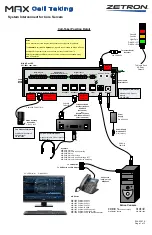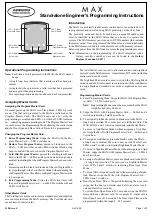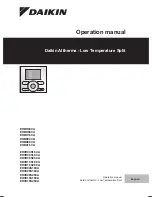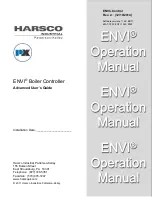
TC1796
System Units (Vol. 1 of 2)
Reset and Boot Operation
User’s Manual
4-20
V2.0, 2007-07
Reset, V2.0
4.4
Bootstrap Loader (BSL)
The bootstrap loader (BSL) is a software part which is integrated in the TC1796 Boot
ROM. The BSL provides a mechanism to load a program code via a serial interface (ASC
or CAN) into the scratchpad RAM (SPRAM) of the PMI. After loading of the code, the
BSL jumps directly to address D400 0000
H
(start address of the PMI scratchpad RAM)
and begins executing the program code that has been loaded. The BSL automatically
calculates the baud rate of the serial data streams.
shows the three BSL modes with its parameters.
With the low-to-high signal transition of the hardware reset signal HDRST or the power-
on reset signal PORST, the input pins BRKIN and HWCFG[3:0] of the TC1796 are
latched. If one of the latched BRKIN/HWCFG[3:0] signal combination of
detected, the bootstrap loader is started and the selected bootstrap loader mode is
entered.
The bootstrap loader can also be started by a software reset. For this purpose, bit
RST_REQ.SWBRKIN and bit field RST_REQ.SWCFG must be loaded with the
corresponding BRKIN/HWCFG[3:0] code, and bit RST_REQ.SWBOOT must be set (see
also RST_REQ register description at
).
When a boot option for a bootstrap loader mode is detected, the TC1796 jumps to
address DFFF FFFC
H
which is the last word address of the Boot ROM. During execution
of the bootstrap loader, the Watchdog Timer interrupts and NMI interrupts are disabled.
Table 4-5
Bootstrap Loader Selections
Bootstrap Loader Mode
Selection
1)
1) The bootstrap loader mode selections in alternate boot modes see
Associated I/O Lines
BRKIN
HWCFG
[3:0]
Receive
Transmit
Bootstrap Loader Mode 1 (BSL1):
ASC Boot via ASC0 Pins
1
0000
B
P5.0 /
RXD0A
P5.1 /
TXD0A
Bootstrap Loader Mode 2 (BSL2):
CAN Boot
0001
B
P6.8 /
RXDCAN0
P6.9 /
TXDCAN0
Bootstrap Loader Mode 3 (BSL3):
ASC Boot via CAN Pins
1111
B
P6.8 /
RXD0B
P6.9 /
TXD0B
















































